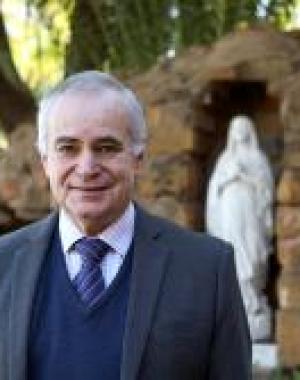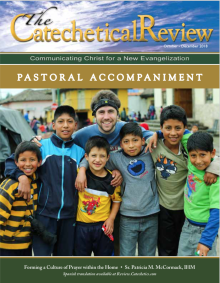Sofia Cavalletti was arguably the most effective catechetical theorist and practitioner of her era. Born in 1917, she belonged to a noble Roman family, who had served in the papal government. Marchese Francesco Cavalletti had been the last senator for Rome in the papal government, prior to its takeover in 1870 by the Italian state. Sofia herself bore the hereditary title of Marchesa, and lived in her family's ancestral home in the Via Degli Orsini. In 1946, the young Sofia Cavalletti began her studies as a Scripture scholar at La Sapienza University with specializations in the Hebrew and Syriac languages. Her instructor was Eugenio Zolli, who had been the chief rabbi of Rome, prior to and during World War II and who had become a Catholic after the war. Following her graduation, Cavalletti remained a professional academic for the whole of her professional career.
Cavalletti's involvement with catechetics came about by chance, in 1952, after she was asked to prepare a child for his first communion. Soon after this experience, Cavalletti began collaborating with Gianna Gobbi, a professor of Montessori education. Together, they developed what came to be known as the Catechesis of the Good Shepherd, painstakingly creating materials that would serve the religious needs of children from the ages of three to twelve years. Taking the Montessori sensitive periods as a starting point and guided by the response of real children as the “reality check,” Cavalletti refined her understanding of the religious experiences that children were likely to respond to at each stage of their development. She would create materials and make them available to the children. If the material was not used, she determined that it had not met the mark and she would dispose of it, irrespective of how much effort she had put into it.
Very early in her work, Cavalletti discerned the central role of “wonder” in a child’s religious development and she realized that for young children (and indeed for every human being), wonder is evoked by “an attentive gaze at reality.”[i] Consequently, young children were encouraged to begin their relationship with God by recognizing, one by one, the gifts offered to them in the created world. To meet this need, the Montessori “practical life” works were found to be ideal. Children were given tasks such as flower arranging, slow dusting, leaf washing and the like. The experience of Montessori classrooms for over a hundred years has born witness to the effectiveness of this approach. Engagement with concrete “hands on” activities seem to be the basis not only of religious development but for learning of any kind.
The careful observation of the needs of real children by Montessori had identified the basic stages of learning, (outlined in my previous article). Cavalletti summed this up in a simple axiom: first the body, then the heart, then the mind. As the twentieth century progressed, she evaluated new ideas in education, Biblical scholarship, and theology. Cavalletti did not easily fall prey to a widely reported educational phenomenon, the “band wagon effect.” She was an “action researcher” who allowed herself to be guided by the reactions of the children she was working with. If a learning material failed to engage the children, it was discarded and alternatives sought.
One of the most striking and commonly reported phenomena of the Catechesis of the Good Shepherd is that children seem to be able to arrive at profound theological understandings for themselves—without being told.
The rest of this online article is available for current Guild members.
This article is from The Catechetical Review (Online Edition ISSN 2379-6324) and may be copied for catechetical purposes only. It may not be reprinted in another published work without the permission of The Catechetical Review by contacting [email protected]


















